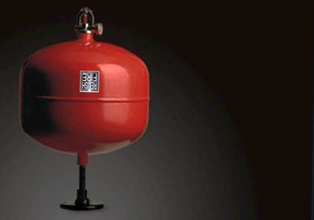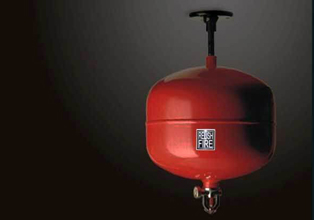Automatic Modular Based Fire Extinguisher
A System That Acts Before We Do Operation : Blot Fire Modular type fire extinguisher is designed to be operative, automatically. The unit is a stored pressure type with a mixture of ABC dry powder and dry nitrogen. as soon as fire reaches the specified temperature under it,panerai replica watches the glass bulb shatters allowing the content to be released as a mist to cover a wide area.
Automatic fire suppression systems control and extinguish fires without human intervention. Examples of automatic systems include fire sprinkler system, gaseous fire suppression, and condensed aerosol fire suppression. When fires are extinguished in the early stages loss of life is minimal since 93% of all fire-related deaths occur once the fire has progressed beyond the early stages.
By definition, an automatic fire suppression system can operate without human intervention. To do so it must possess a means of detection, actuation and delivery. In many systems, detection is accomplished by mechanical or electrical means. Mechanical detection uses fusible-link or thermo-bulb detectors. These detectors are designed to separate at a specific temperature and release tension on a release mechanism. Electrical detection uses heat detectors equipped with self-restoring, normally-open contacts which close when a predetermined temperature is reached. Remote and local manual operation is also possible. Actuation usually involves either a pressurized fluid and a release valve, or in some cases an electric pump. Delivery is accomplished by means of piping and nozzles. Nozzle design is specific to the agent used and coverage desired.
According to the 2007 IPCC climate report,panerai replica watches HFC-23 was the most abundant HFC in the global atmosphere until around 2001, which is when the global mean concentration of HFC-134a (1,1,1,2-tetrafluoroethane), the chemical now used extensively in automobile air conditioners, surpassed those of HFC-23. Global emissions of HFC-23 have in the past been dominated by the inadvertent production and release during the manufacture of the refrigerant HCFC-22 (chlorodifluoromethane). Data reported to the United Nations Framework Convention on Climate Change (UNFCCC) greenhouse gas emissions databases [8] indicate substantial decreases in developed or Annex 1 countries HFC-23 emissions from the 1990s to the 2000s (UNFCCC greenhouse gas emissions databases). The UNFCCC Clean Development Mechanism projects have provided funding and facilitated the destruction of HFC-23 co-produced from a portion of HCFC-22 produced in developing or non-Annex 1 countries since 2003. Developing countries have become the largest producers of HCFC-22 in recent years according to data compiled by the Ozone Secretariat of the World Meteorological Organization.[9][10][11] Emissions of all HFCs are included in the UNFCCCs Kyoto Protocol. To mitigate its impact, CHF3 can be destroyed with electric plasma arc technologies or by high temperature incineration.


